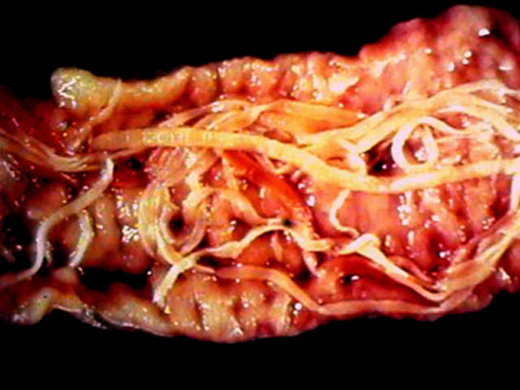
In the case of most serious ulcers, stomach ulcer surgery is the last resort for treatment. This is reserved for bleeding ulcers which will not stop or for perforated ulcers (which result in emergency surgery).
Bleeding Ulcer Surgery
If you have signs or stomach ulcer symptoms that include blood in the stool or vomit (typically black and the appearance of coffee grounds in the vomit or tar in the stool) than you need to seek immediate medical attention.
Most bleeding ulcers do not require surgery and if treatment is received early enough you may be able to prevent surgery. Treatment via proton-pump inhibitors and endoscopic procedures is frequently enough to stop bleeding and promote ulcer healing.
One treatment includes using an endoscope to stop ulcer bleeding, either by using chemicals to enhance blood clotting or “patching” the ulcer from the inside. These are nearly always combined with proton-pump inhibitors (as mentioned) which not only help reduce the production of stomach acid but also promote ulcer healing.
However, in some cases, these treatments fail and surgery is required.
Surgical Procedures
There are two different types of peptic ulcer surgeries: surgeries to repair the ulcer and surgeries to prevent further damage and future ulcers from occurring.
Repairing the ulcer is a relatively straight-forward procedure that involves closing the the wound in the stomach surgically. This is done both with open surgery and laparascopic.
As technology and the skill of surgeons advances, gastric ulcer surgery is moving towards laparascopic over open surgery. However, in the case of a perforated ulcer and subsequent emergency surgery, you will have to “take what you can get” when it comes to the procedure used.
Sometimes other surgeries can be done for ulcers, particularly those with chronic ulcers. one of the more common (but still overall rarely performed) is the vagotomy. This involves snipping the vagus nerve which innervates portions of the stomach and stimulates the production of stomach acid.
The vagotomy is not a procedure used normally to reduce stomach acid. However, in rare cases certain genes can cause the stomach to produce too much acid, making a vagotomy a viable procedure. To reiterate this is quite rare but some are born with congenital abnormalities in the production of stomach acid, making a procedure like a vagotomy a viable option.
A vagotomy is not viable for most of the population. If you had a serious ulcer that resulted from over-reliance on NSAIDs in conjunction with an active H pylori infection and surgical repair was required, the easiest thing to do would be to stop using NSAIDs and get H pylori treatment.
Other surgeries include removing portions of the stomach responsible for stimulating stomach acid as well as modifying the pyloric junction. This can help reduce the amount of stomach acid produced as well as enhance the stomach’s ability empty (which could lead to negative effects in the duodenum in the long term). These surgeries have become less popular over the years due to advances in medicine (i.e. proton pump inhibitors).